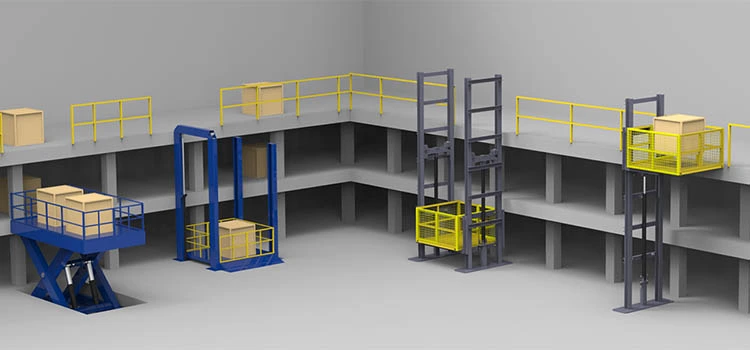Discover Trustworthy Lift Repair Near Me for Quick and Affordable Solution
Discover Trustworthy Lift Repair Near Me for Quick and Affordable Solution
Blog Article
Looking Into the World of Lifts: Typical Concerns Dealt With by Various Lift Devices
As we navigate through the upright transportation systems of modern structures, lifts stand apart as a crucial part of our every day lives. Nonetheless, behind their smooth procedure lies a world of detailed devices that can often experience obstacles. From hydraulic lifts to grip systems and machine-room-less styles, each lift kind includes its set of typical issues. Understanding these challenges is essential for making sure the smooth performance of these essential systems. Allow's explore the intricacies that underlie the procedure of elevators and the potential problems that can arise, clarifying the elaborate web of lift mechanisms.
Hydraulic Lifts
Hydraulic elevators, often chosen for low-rise buildings, make use of fluid pressure to manage the movement of the lift vehicle (lift repair companies). This device entails a hydraulic pump pressing oil into a cylinder, triggering the elevator to relocate the preferred instructions. While hydraulic lifts are recognized for their peaceful and smooth operation, they do include their own collection of typical problems
One common problem with hydraulic lifts is oil leak. In addition, issues with the control system, such as damaged valves or a malfunctioning pump, can cause disturbances in the lift's motion.
Routine maintenance and punctual fixings are necessary to guarantee the smooth functioning of hydraulic lifts. By resolving these usual problems proactively, structure proprietors can minimize downtime and guarantee the safety and performance of their upright transport system.
Traction Elevators
When thinking about vertical transportation systems in structures, an additional usual type apart from hydraulic elevators is the traction lift. Traction elevators run making use of a system of ropes and counterweights that move the lift cars and truck by gripping onto the hoist ropes. This mechanism permits smoother and quicker vertical transport contrasted to hydraulic systems.
One of the typical issues faced by grip lifts is rope wear. The continuous movement of the ropes within the traction system can lead to damage in time, possibly creating the lift to breakdown or become hazardous for usage. Normal inspections and upkeep of the ropes are important to make sure the lift's correct functioning and security.
One more problem that grip lifts may run into is associated with the control system. Issues with the control system can bring about problems such as unpredictable motion, hold-ups in reaction times, or even full closures. Normal testing and maintenance of the control system are critical to stop such issues and guarantee the lift's dependability.
Machine-Room-Less (MRL) Lifts

Among the key components of MRL lifts is the portable gearless traction device that is set up within the hoistway. This maker effectively drives the elevator vehicle without the need for cumbersome equipment found in typical traction lifts. In addition, MRL lifts usually make use of a weight system to stabilize the car, additional improving their energy performance.
Regardless of their benefits, MRL lifts might face challenges associated with upkeep and repair work as a result of the confined area for equipment installation. Access for servicing components within the shaft can be limited, requiring specialized training for professionals. Appropriate upkeep schedules and regular inspections are crucial to ensure the continued smooth procedure of MRL lifts.
Overloading and Weight Restriction Issues
Overloading and weight limit issues are crucial issues in elevator operations. Elevator suppliers style lifts with certain weight capabilities to guarantee passenger security and devices longevity.
When lifts are strained, it puts too much stress on the electric motor, cords, and other parts, possibly creating breakdowns or malfunctions. Security systems such as sensors and overload sensing units are in location to stop elevators from relocating if they identify excess weight. In addition, exceeding weight limits can result in boosted energy usage and damage on the lift system.
To reduce straining problems, constructing managers ought to plainly display weight limits in lifts and inform residents on the significance of adhering to these limitations - you can find out more lift repair companies. Normal maintenance checks by certified professionals can likewise assist ensure that elevators are running within safe weight specifications. By dealing with overloading and weight restriction concerns proactively, structure owners can improve lift safety and security and performance
Electrical System Failures
Exceeding weight limitations in lifts can not only lead to mechanical problems yet additionally potentially add to electrical system failures within the lift facilities. Electric system failures are an essential issue in elevator operation, as they can cause unexpected shutdowns, malfunctions, or also security dangers.
Normal upkeep and inspections are critical to recognize and address prospective electric issues immediately, ensuring the safe and reliable procedure of elevator systems. By adhering to weight restrictions and performing regular electrical system checks, structure owners can mitigate the threat of electrical failings in lifts.
Final Thought

Hydraulic lifts, often preferred for low-rise buildings, use fluid view publisher site pressure to control the movement of the lift car.When taking into consideration upright transportation systems in buildings, an additional common type aside from hydraulic elevators is the traction elevator. Grip elevators operate making use of a system of ropes and weights that move the lift car by clutching onto the hoist ropes. Unlike standard lifts that call for a different machine area to house the tools, MRL lifts integrate many of the elements within the shaft, removing the demand for a dedicated equipment room.In final thought, lifts encounter usual problems such as hydraulic breakdowns, grip system failures, and electric system problems.
Report this page